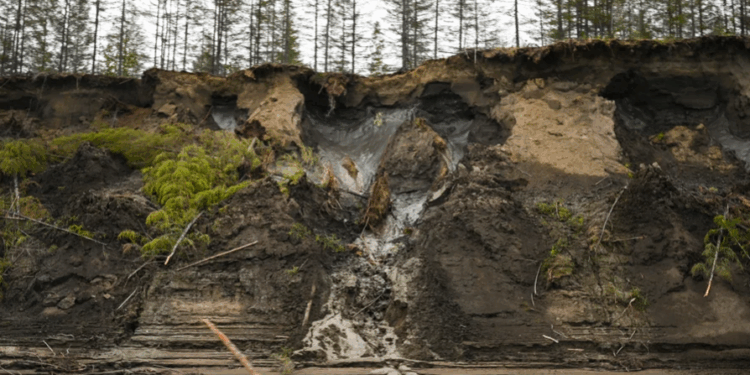An international team of scientists says nematodes found in Siberian permafrost are 46,000 years old and survived using techniques similar to those of a modern lab favorite
At first glance, nematodes are unassuming roundworms—but don’t underestimate them.
In 2018 scientists announced they had discovered and revived two types of microscopic nematodes found in the Siberian permafrost, estimating they may have been 42,000 years old. Now these roundworms are the subject of more research, which posits that one of these nematode varieties represents a new species, dubbed Panagrolaimus kolymaensis for the Kolyma River where they were found. The new research, published on July 27 in the journal PLOS Genetics, also compares the Siberian worm’s survival mechanism with one found in another nematode species, Caenorhabditis elegans—a model organism used in laboratories around the world. The researchers further claim that the P.kolymaensis worms are actually 46,000 years old, based on their dating of plant matter found with these nematodes.
“The radiocarbon dating is absolutely precise, and we now know that they really survived 46,000 years,” says study co-author Teymuras Kurzchalia, a cell biologist emeritus at the Max Planck Institute of Molecular Cell Biology and Genetics in Dresden.
Panagrolaimus species are found around the world and are known for surviving in environments that regularly expose them to desiccation or freezing, says Ann Burnell, an emeritus professor of biology at Maynooth University in Ireland, who was not involved in the new study.
If the worms really are as old as the study suggests, they would be by far the most stunning examples of what scientists call cryptobiosis—an organism’s ability to suspend its own metabolism in poor conditions.
“I thought it was an impressive and interesting piece of work,” says David Wharton, an emeritus professor of zoology at New Zealand’s University of Otago, who was not involved in the new research.
But some scientists are skeptical of the study’s findings, which was also the case when the specimens were first reported in 2018. At that time outside researchers expressed concerns that the analyzed nematodes might be modern contamination. Byron Adams, a biologist at Brigham Young University, was one of those skeptics and remains unconvinced by Kurzchalia and his colleagues’ new work. “I would love to believe that the animals they are describing have survived being frozen for 40,000 years in permafrost,” Adams says. “And if I were a betting man, I would bet that it could actually happen, and these things really are this old.”
But Adams contends that the analysis in the paper doesn’t prove the worms’ age—only that of the plant material found nearby. “I don’t doubt the age of the organic material in the permafrost,” he says. “Those values are likely legit.”
Adams adds, however, that “the authors haven’t done the work to show that the animals they have recovered are not simply surface contaminants.” One way to verify the ages, he says, would be to sample soil in the area and confirm that nematodes in it represent different species from those found living in the permafrost.























